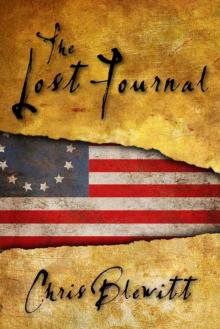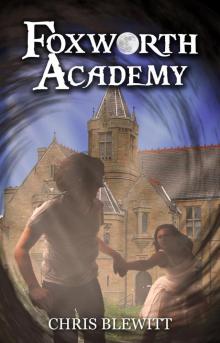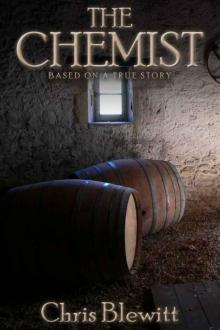- Home
- Chris Blewitt
The Chemist - Based on a True Story Page 3
The Chemist - Based on a True Story Read online
Page 3
Charlie shut the door and went back inside. Everyone was still giddy at the news of the new baby in the family. He didn’t know whether to tell them now or wait.
One thing was for sure, he was going to tell someone what happened to his brother.
Chapter 5
The Elverson Building on 400 North Broad housed the oldest living newspaper, The Philadelphia Inquirer. Founded on June 1st, 1829, the Inquirer had a daily circulation of over a quarter million, plus another hundred thousand on Sundays. This eighteen story building was where Charlie White made an important decision that Tuesday afternoon. It was three days after the death of his brother and just hours after burying him in Laurel Hill Cemetery. He spoke to the coroner and the doctor at the hospital multiple times and they both confirmed his suspicions. Jimmy was found in an alley by the police early that Christmas morning. He was pronounced dead at the scene. They took him to the hospital anyway and did a blood test. The results were startling.
His blood alcohol level was almost thirty percent. Even more disturbing was the number of chemicals found in his blood. This was not surprising to Charlie at all. He knew that some of the booze being made by the bootleggers was being poisoned.
He knew because he was the one poisoning it.
Charlie walked into a reception area and asked for the editor of the newspaper but was told he had to have an appointment. He explained that he didn’t need one and that he had a story that would be front page news either at this paper or in New York, he didn’t care. The brown haired receptionist left her post and went to find the editor of the paper.
A man in a rumpled white shirt, sleeves rolled up, loose tie, came out of the back with a cigarette dangling from one end of his mouth. “You wanna see me?” he asked, not taking the smoke out. Without waiting for a reply, the man said, “Follow me.”
He led Charlie through a maze of desks towards the back of the long office space. There was paper all over the floor, people yelling, cigarette smoke in the air, and typewriters pecking away. They walked into an office and Charlie started to close the door behind him.
“Don’t. Leave it open. I love the sound of the chaos out there. Makes me feel like this paper actually does something.” The editor sat down at his filthy desk, lit another cigarette and leaned back in his chair. “Name’s Ed Backman. I know, funny, right. Ed as in editor. If you’re gonna make a joke, don’t. I’ve heard em all before. Now what have you got for me?”
Charlie sat down across from the slim man and began his story. “My brother died on Christmas.”
“Sorry to hear that.”
“He was poisoned.”
“Oh yeah? You got proof of that? Go tell the cops.”
“I poisoned him,” Charlie said.
Ed Backman leaned forward in his chair and put the cigarette in the already full ashtray. “You poisoned your own brother?”
“Not directly. But I believe my actions caused his death.”
“You wanna start from the beginning before you give me a headache?”
“I’m a chemist down at Dupont and one day I was followed by these two men and I ended up in the hospital. Anyway, these two men met me again the next day and told me that I had to start working for them.”
“Who were they?”
“United States Treasury Agents.”
“The government?” Ed asked. He suddenly became interested in what this short and stubby man had to say.
Charlie nodded. “They told me I had to start adding some chemicals to the industrial alcohols that were coming into the shipyards.”
“What kind of chemicals?” Ed asked.
“Lead, arsenic, whatever.”
“Jeez.” Now Ed was taking notes with a pencil and paper. “Why?” he asked.
“They said that people, gangs, the mob, whoever, are stealing the solvents, industrial ethanol and other industrial alcohols and turning them into drinkable alcohol. They wanted to deter the public from making and drinking this stuff.”
“I’ve heard of people doing this,” Ed said.
“Yeah, nasty stuff. So, the agents got the chemicals ahead of time, brought them to a makeshift lab and had me add proportionate amounts of methanol. Poison.”
“And this killed your brother?” Ed asked.
Charlie nodded his head. “And more than twenty others,” Charlie said. “Just here in Philadelphia. Just this past week. Imagine how many more around the country!”
Ed digested all this information. “Do the agents know you’re here?”
Charlie shook his head.
“Didn’t think so. You want me to run with this?”
Charlie nodded his head.
“You sure?”
“It need to stop and if they don’t stop it, the people have a right to know that their own government is poisoning them.”
Ed stood up from his chair and walked to the window, looking out at the city. “Why’d you do it?”
Charlie let out a sigh and said, “You ever say no to the US Government? Besides, they got my brother out of jail.” He lowered his head into his hands. “God, how did I get myself into this?”
Ed turned to face Charlie and crossed his arms. “This story is going to be front page news tomorrow. You know that right?”
“Yep, it has to be this way.”
“Good, let’s go see my feature story writer. He’ll want to hear everything you just told me and then some. We’ll keep your name out of it of course.” He walked over to Charlie and put his hand on his shoulder. “I’m sorry about your brother but you’re doing the right thing.”
Charlie got up from his chair, shook the man’s hand and they left the office. After his interview with the feature story writer, Charlie walked outside, put his hat on and brought his overcoat up to his neck. It was chilly out today. Not a good day to be walking the streets. He walked all the way down to the docks and stared across the Delaware River into New Jersey. He looked down at the water which had to be forty degrees. Contemplated jumping in. It would be painful, he thought, but I’d be dead in ten minutes from hypothermia.
How could he do this to his own brother?
He looked down at the water again.
Then he thought of his wife Helen and his unborn child and he walked away from the docks. He hoped his wife had a boy so he could name him James.
Chapter 6
Sunday, December 29th, 1926
Philadelphia Inquirer
Staff Writer: Bob Franklin
GOVERNMENT KILLING US THROUGH POISON
It was just a few months ago that Jimmy White received his second chance on life. Serving time for armed robbery, he was released early for good behavior. Now, Jimmy rests under six feet of dirt, rock and grass in Laurel Hill Cemetery, killed by the same men who released him from prison. The United States Government.
THE END
Interview with Anne Helmenstine from chemistry.about.com
Anne was a great help in answering my questions about ethanol and methanol. I asked Anne to explain some of the technical aspects of bootlegging, moonshine and in her opinion, what really happened in the 1920’s.
Ethyl alcohol is ethanol or grain alcohol. It is the only type of alcohol that people can drink. Enzymes in the liver can detoxify this alcohol, but not other types.
Other alcohols include rubbing alcohol, which is isopropyl alcohol or isopropanol and wood alcohol, which is methyl alcohol or methanol. Both of these types of alcohol can be absorbed across your skin, so you don’t even have to drink them to be poisoned by them. Most rubbing alcohol evaporates before it can cause much harm, but you’ll find serious warnings on products that contain these alcohols (disinfectants and fuel treatments) warning of blindness, permanent nervous system and other organ damage and death.
Paint thinner and other solvents are made from other chemicals, such as acetone and turpentine. You can neither drink them nor make ethanol from them.
Usually moonshine is made from corn or a grain, pretty much like how you would m
ake vodka or whiskey today. Moonshine is still made today and some companies distill and sell it legally. You can find it in liquor stores in most states that make ‘shine, such as TN, SC and NC. It is clear and highly purified and pretty high proof. It reminds me more of vodka than anything else. It’s relatively dangerous to make moonshine. The pressure inside still sometimes causes them to explode. A distiller has to know what he is doing to avoid contamination, either from the distillation process or from the alcohol absorbing impurities from his equipment.
Government officials involved in Prohibition felt one way to deter people from drinking an illegal product was to make it poisonous. Various toxins were introduced into alcohol, including lead, methanol and arsenic. Alcohol production was not as regulated as it is today, so the quality of the distillation process was notoriously unreliable. There was alcohol on the market, not just moonshine that was poorly purified and contained toxic chemicals such as benzene and acetone. Actually, you’ll find these contaminants in alcohol today, though I think most people are unaware. Anyway, at least 10,000 Americans died from poisoned alcohol during prohibition, including children, since alcohol was used in medicinal preparations and not just for social drinking.
Anne Helmenstine is a scientist and scientific writer. She has a Ph.D. in biomedical sciences from the University of Tennessee – Oak Ridge National Laboratory and Bachelor of Arts degrees in physics and math from Hastings College. Please visit chemistry.about.com for more information.
Acknowledgments
I’d like to again extend my gratification to Anne for assisting on the technical aspects of The Chemist. In 2010, I came across an article entitled, The Chemist’s War – The little-told story of how the U.S. government poisoned alcohol during Prohibition with deadly consequences. It was written by Deborah Blum for Slate Magazine. This article inspired my story and the facts obtained in my story are as a result of reading Deborah’s article, including the “Santa Claus” bit. The only difference here is that actual event took place in New York, not Philadelphia.
Thanks to Jason Merrick, the cover designer I met on Kindle Boards. Excellent job.
My beta-readers, Mom, Dad, Steve White, Mother-in-Law, Father-in-Law, and author Michael Robertson, thanks for pointing out the errors and omissions before The Chemist went to print. Thanks too to my loving wife Katie for proofreading the story and forever supporting me in this journey as a writer.
About the Author
Chris Blewitt is the author of Deep Rough, a thriller about Augusta National and the Masters. During Masters Week 2011, Deep Rough was the #1 Kindle book in the categories of Sports, Golf, and Sports Gambling. Chris is also the author of The Lost Journal which was recently the # 1 Historical Mystery on Kindle. Chris is a salesman, husband, father of two boys and a girl and lives just outside of Philadelphia. Learn more @ www.chrisblewitt.com.

 The Lost Journal
The Lost Journal Foxworth Academy
Foxworth Academy The Chemist - Based on a True Story
The Chemist - Based on a True Story